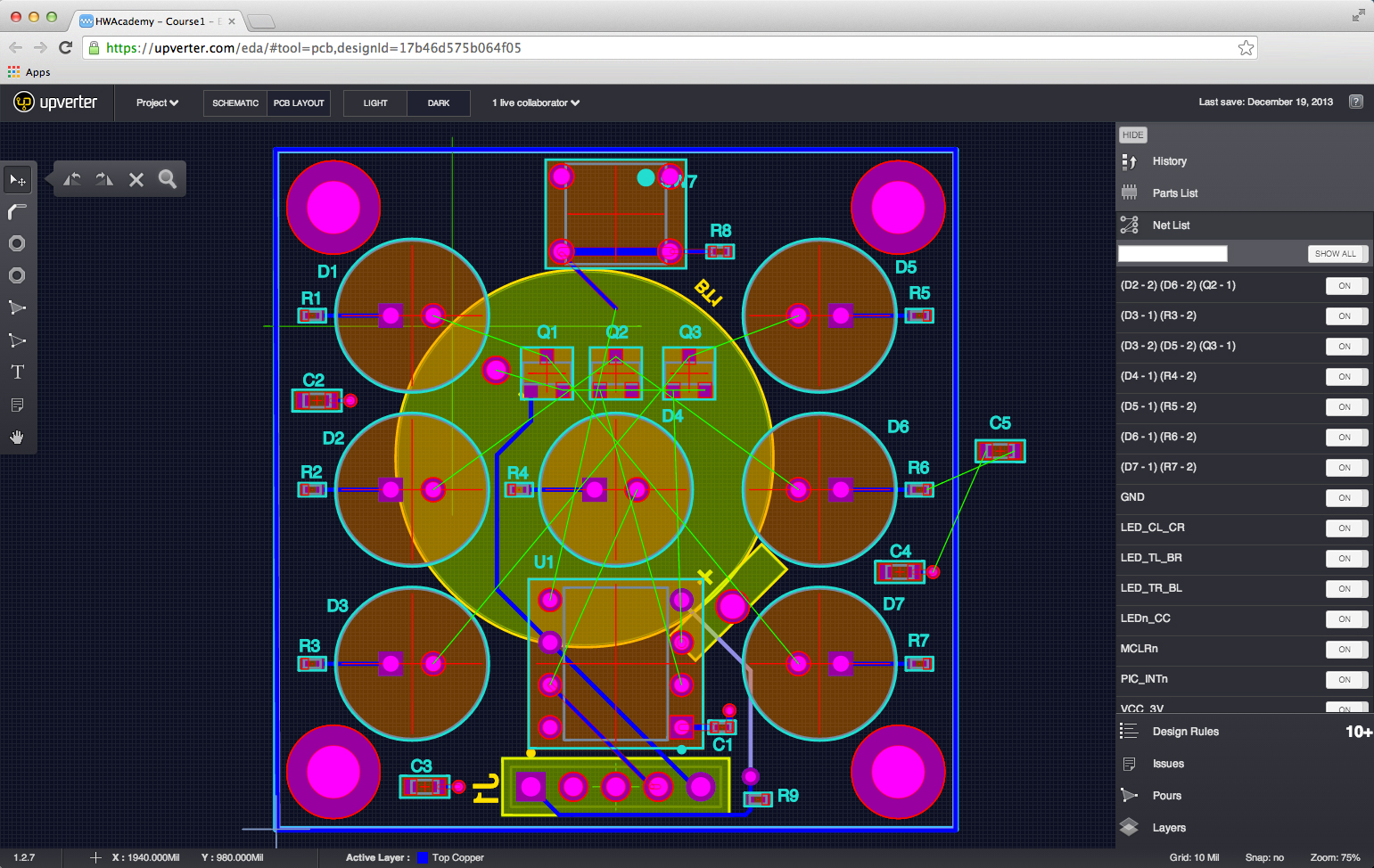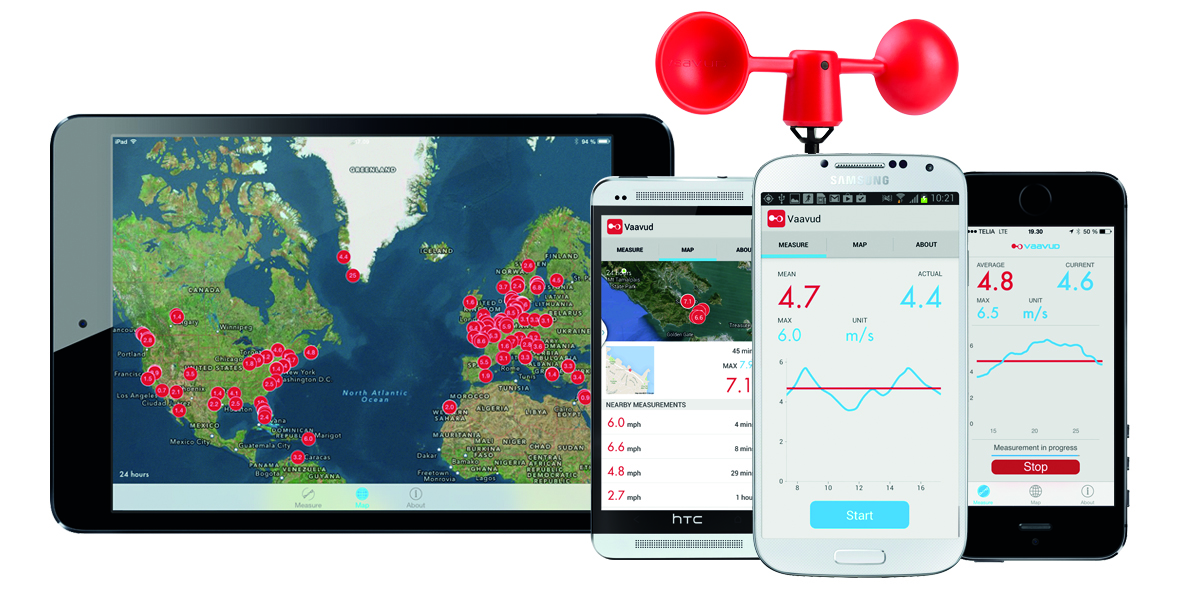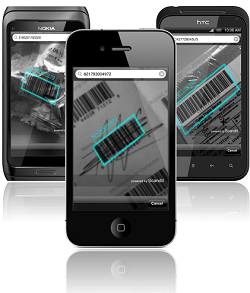 A Q&A with Upverter co-founder and CEO Zak Homuth. The Toronto-based startup, which offers a cloud-based hardware engineering platform, announced in late March that it has raised $2.3 million in new Seed funding. Investors include Version One Ventures, Golden Venture Partners, Tom McInerney, Carl Bass, Amol Sarva and David Lerner. It was founded in 2010 by Homuth, CTO Stephen Hamer, and CIO Michael Woodworth, and previously raised two earlier Seed funding rounds totaling just north of $2 million.
A Q&A with Upverter co-founder and CEO Zak Homuth. The Toronto-based startup, which offers a cloud-based hardware engineering platform, announced in late March that it has raised $2.3 million in new Seed funding. Investors include Version One Ventures, Golden Venture Partners, Tom McInerney, Carl Bass, Amol Sarva and David Lerner. It was founded in 2010 by Homuth, CTO Stephen Hamer, and CIO Michael Woodworth, and previously raised two earlier Seed funding rounds totaling just north of $2 million.
SUB: Please describe Upverter and your primary innovation.
Homuth: Upverter makes a platform for doing engineering design and hardware manufacturing. Our platform runs in the cloud, and is designed for the modern, collaborative, and distributed way of working. You can use Upverter for every stage of hardware development—schematics, engineering drawings, PCB (printed circuit board) layouts, and simulations.
Our primary innovation is that we were able to move these archaic old desktop tools to the cloud, resulting in tools that are collaborative, multi-player, and run straight from the web browser.
SUB: Who are your target markets and users?
Homuth: Upverter is used by more than 30,000 engineers around the world, ranging from professional to hobbyists. They build anything electronic, which includes IOT (Internet of things) devices, wearables, computers, and cameras.
SUB: Who do you consider to be your competition, and what differentiates Upverter from the competition?
Homuth: We compete with generic collaboration systems such as Dropbox and Box, as well as legacy design tools like Altium and Mentor Graphics. What Upverter offers is a combination of the two categories but much more application-specific, meaning modern design tools that were built for collaborative engineering.
SUB: You just announced that you’ve raised $2.3 million in new Seed funding. Why was this a particularly good time to raise more outside funding?
Homuth: We have spent the past few years building up our technology to get to a point of competitiveness within the professional market. As we started closing our first meaningful enterprise sales, we knew that we were there. This marks a new phase for Upverter, and we raised this money to boost our efforts in further establishing ourselves in this market.
SUB: How do you plan to use the funds, and do you have plans to seek additional outside funding in the near future?
Homuth: This money was raised to double down on the professional market, to begin marketing Upverter, and to continue our R&D efforts. We plan to raise our Series A in the next 18 months as we continue to prove that Upverter is the way professional engineers are going to design hardware in the future.
SUB: What was the inspiration behind the idea for Upverter? Was there an ‘aha’ moment, or was the idea more gradual in developing?
Homuth: Steve, Mike and I are all hardware engineers. We can code too, but we have a very strong affinity to hardware. While working at a number of hardware companies, we all experienced first-hand how broken the market is, and how difficult the process of building hardware still is. We believe hardware is the future, and we believe that without empowering engineers with better tools, we’re never going to get there.
SUB: What were the first steps you took in establishing the company?
Homuth: We first started by trying to build a piece of software that scratched the itches we had in our jobs. As it became more-and-more serious, and more and more likely that we would be fixing a bigger problem, we incorporated and became a company. Not long after that, we participated in YC and launched the product publicly for the first time.
SUB: How did you come up with the name? What is the story or meaning behind it?
Homuth: An upverter, or upconverter, is an electrical component that takes a slow-speed signal, and turns it into a high speed signal. It’s a fitting name for what we do—we make you faster.
SUB: What have the most significant challenges been so far to building the company?
Homuth: We’ve pivoted a bunch regarding the market, how different we wanted the product to be, and whether data, users, or revenue was the most important thing for Upverter. I think the most significant challenge has been staying focused, and celebrating our progress while trying to disrupt a very old and very stagnant market. Hardware engineers haven’t changed much in 30 years. It’s both a part of the problem we’re solving and an obstacle to our success.
SUB: How do you generate revenue or plan to generate revenue?
Homuth: We’ve got a SaaS (Software-as-a-Service) model where our customers pay $99 per-month month per-engineer using our software.
SUB: What are your goals for Upverter over the next year or so?
Homuth: We’re on track to $100K in monthly recurring revenue. Our goal is to get there as soon as possible while continuing to grow the community and providing an amazing user experience.















